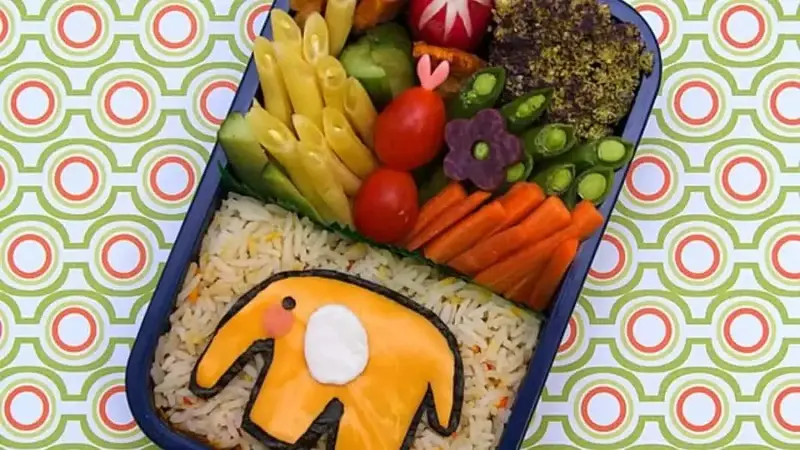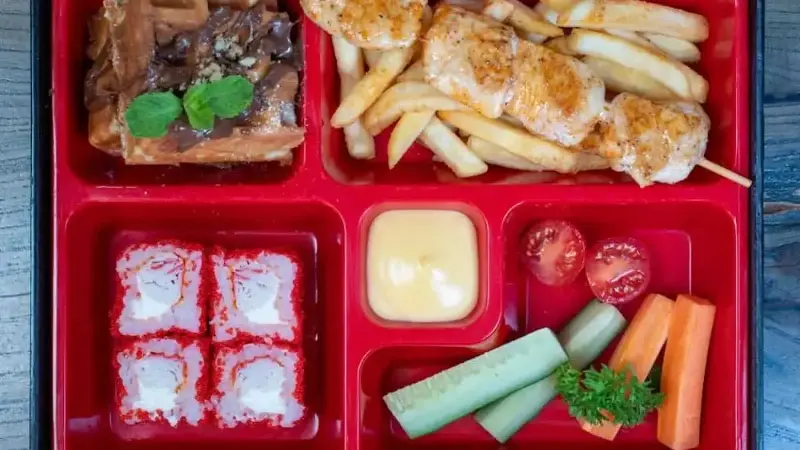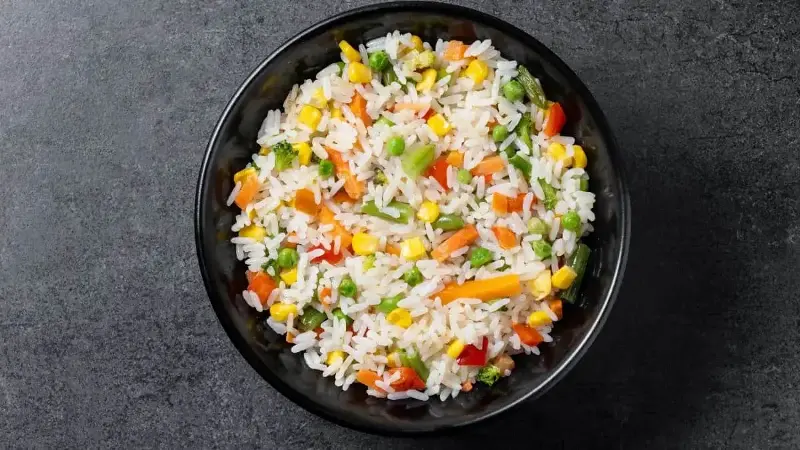
Bento boxes first started in Japan. They were made to carry simple, balanced meals in small sections. Over time, they became an important part of Japanese culture, showing care and order in the way food is packed and eaten. There are many Instagram accounts dedicated to the craft, and the hashtag #bento has almost 2.7 million tags. Approximately 1,000 years ago, during the Kamakura period (1185–1333), the boxes originally appeared in their most basic form and were used to transport rice. The lacquered wooden box was created in the late 16th century, and throughout the following several centuries, bento was used for more than just packing lunches. It was also used for travel, entertaining, theatre outings, tea services, and more. Due to food shortages and the perception that bento boxes were a luxury, their popularity declined in the early 20th century. However, with the advent of microwaves and convenience stores in the 1980s, the popularity of boxed meals increased once more.
People enjoy trying these foods and adding their own local twist to them. In India, too, these ideas have caught on. You can find matcha desserts, bubble tea cafés, and Korean snacks in many cities now. Bento boxes have joined this list. Many people now make Indian-style bento boxes, using simple home foods like rice, sabzi, paratha, or idlis, but arranged neatly in compartments. It’s an easy and fun way to make everyday meals look organised and appealing.

The dishes in a normal bento box are balanced and often consist of rice, pickled veggies, and meat or fish. In Japan, making a bento box for your child is seen as a loving gesture, and many mothers compete to create the most exquisite and nourishing boxes. They include matching cutlery, chopsticks and carrying pouches known as kinchaku. They can be rectangular, circular or oval. Now, if this sounds similar to how dabbas have existed in India, then you are on the right track of thought. Approximately 5,000 deliverymen known as dabba wallahs manually bring 200,000 hot meals to Mumbai residents' doorsteps each day.
Also Read: 6 Creative Bento Box-Inspired Summer Lunches For Children
It's a complex network that necessitates multiple handoffs between couriers and exact timing. For office workers in the city, the century-old service is a need. Indian employees have had their lunches delivered for decades, but typically from their kitchens. So when the bento box trend reached India, it wasn’t that difficult to match the level of culinary art that goes into making a box. While dabbas are generally for adults and college-going kids, bento boxes are for anyone and everyone. With that being said, these 4 Indian bento box recipes will make your kids want to have them over and over again.

Vegetable Pulao Image Credits: Freepik
Vegetable Pulao Bento
This veggie pulao bento box has promise. Savour vegetable pulao cooked with seasonal veggies, spices, and aromatic rice. Three parts of dal tadka and a crispy papad go well with four parts of pulao. Fill one section of your bento box with raita and salad, and the final section with tart green grapes. This is the ideal illustration of a cosy bento box for a school or office meal.
Paneer Uttapam Bento
Soft and savoury, paneer uttapam can be topped with grated paneer, carrots, onion, and coriander. Carrot sticks and tomato ketchup are served on the side. You can use leftover idli or dosa batter to make uttapam. All you need to do is shred the vegetables and paneer the night before and put them in the refrigerator. The next day, just fry them up and pack them in the bento box.

Spanish Omelette Image Credits: Unsplash
Stuffed Spanish Omelette Bento
Mix eggs, diced onion, tomatoes, green chillies, and coriander leaves. Place the mashed potatoes over the omelette. After cooking the eggs until they are frothy and golden, place them in the box's largest section. Serve the Spanish omelette with paratha or whole wheat bread. A side of tart tomato, cucumber, and onion salad with chaat masala, lemon, and mint-coriander chutney is another option. The bento box option provides the right ratio of carbohydrates to protein.
Mixed Vegetables And Paratha Bento
A satisfying and substantial vegetarian lunchbox to combat the Monday blues. Paratha dough is all you need. The paratha dough can actually be used for the next two days. Cut up vegetables. Put them in the fridge. Make a few partahas, stir fry the vegetables, and add a bit of curd to the bento box just before your child leaves for school.
Bento meals have become more and more popular over the past year because they provide a chance to eat a course-based meal at home without going out or spending a lot of money.
